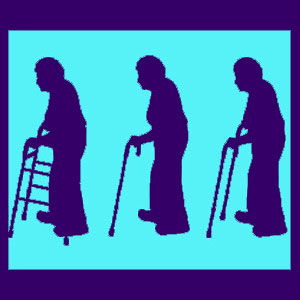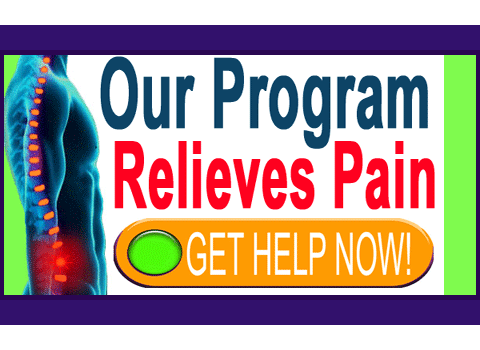
Recovering from back injury can be a daunting task, but must be a top priority in order to avoid the possible chronic continuation of suffering. The patient must learn to deal with the physical symptoms, as well as all the mental and emotional damage created by the pain. It is crucial for the long-term prognosis of the patient to put both the physical and mental scars behind them. Remember, although the body is designed to heal, the mind can perpetuate pain unless the patient can fully get past the injury, mentally and physically.
This tutorial explains how to fully recuperate from injurious back or spine trauma using physical and psychoemotional methods of care. The scope of this article will help provide some guidelines for patients who have suffered injury, but are resolute in their quest to fully recuperate and return to a normal and active life.
Recovering from Back Injury Step 1: Diagnosis
Back injury might be minor or can be life altering. Some injuries can be brutally painful, but heal completely in a short amount of time. Other pain conditions can become chronic and the recovery process might traverse a long and winding road. Regardless of the path of your particular pain, the process towards a full recovery is the same.
The most important part of recovering from back injury is obtaining an accurate diagnosis of the problem. If the diagnosis is incorrect, then all subsequent treatments will be directed at an mistakenly identified cause. These treatments will be guaranteed to fail before they even begin. Misdiagnosis of back pain conditions is a primary reason for treatment failure. If the actual physical cause of the pain is not found, it will delay the patient’s recovery until the mistake is corrected.
If the cause of the pain is a mindbody process, then the patient might be doomed to a lifelong condition of failed treatments, back pain frustration and unbearable torment.
It is unlikely that a conventional doctor will ever diagnose psychological back pain correctly. It is not part of their training and subconsciously, it goes against their treatment agenda.
Recovering from Spine Injury Part 2: Treatment
If the condition is accurately diagnosed, then step 2 is easy. Appropriate back pain treatment will be administered and pain relief will come to the patient. In this case, all the patient needs to do is give themselves over to the therapy and do everything they can do to insure its success.
If step 1 has failed, then step 2 has virtually no chance of succeeding, except by placebo effect. The patient will undergo treatment after treatment and will have poor result after poor result. The doctor will always find some reason why the treatments are not working. Common answers (excuses) include:
The condition is changing in response to treatment.
The condition is more serious than first thought.
The condition has worsened.
There are contributing factors why the pain is getting worse. Besides the injury, your (arthritis, disc degeneration or maybe facet syndrome, for example) is aggravating the injury.
It is almost nonexistent for a doctor to say:
“Hey, maybe I got something wrong here.
Maybe you should go for a second opinion.”
Too bad… Since that might just save the patient from years worth of pain and suffering. After all, recovering from back injury is a combined effort of both the patient and the care provider.
Recovering from Back Injury Step 3: Emotional
If the treatment has worked, the last step will be to get past the injury. If a patient thinks of themselves as being permanently injured, defective or less than before, there is a good chance for a recurrence of pain in the future. The patient must accept their recovery and have faith in the treatment. Remember that the body is designed to heal and heal it has. They are lucky to have a good doctor who has guided them brilliantly through this injury. They have emerged on the bright side and can look forward to a symptom-free future. On the other hand, if treatment after treatment has failed, they must re-evaluate their situation. This is a critical time for a patient. Most of you will discontinue the services of your doctor, but hold on to the diagnosis. Treatment will begin anew under a new provider and the results are likely to be the same… Poor.
If you are suffering from unresolved or treatment resistant back pain, it may be wise to at least consider the possibility that your pain might be psychologically-induced. The effective treatment for psychoemotional back pain is knowledge therapy. It is free and can be accomplished by anyone, regardless of the severity or longevity of their suffering.
If your pain does not turn out to be psychosomatic, then you have lost nothing in attempting a cure using knowledge therapy. In fact, the information will help you to overcome a physical injury faster and more completely, as well. Knowledge therapy is useful for almost all back pain patients.
Recovering from Back Injury Considerations
Back ache is an epidemic condition. There are reasons why this has occurred in such vast numbers and why it will continue to grow among the general population. The only hope is to think outside the box and reach beyond the current popular thought on the real nature of common dorsopathy conditions.
The back is designed to heal. Weeks, months or years filled with pain is not normal. If this is your reality, you owe it to yourself (and the ones who love you) to do everything in your power to recover 100% from your pain.
Back Pain > Recovering from Back Pain > Recovering from Back Injury





